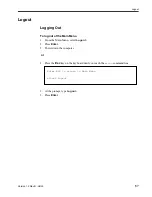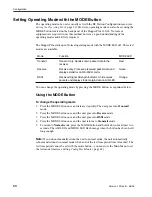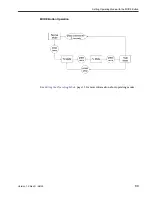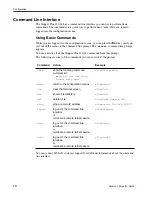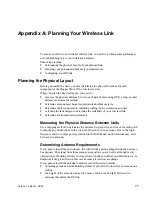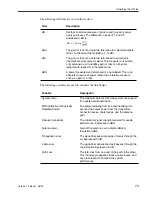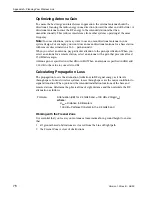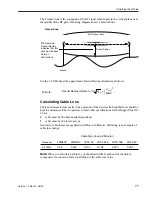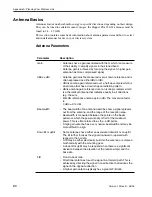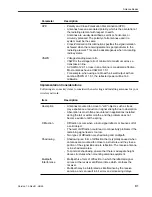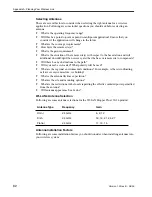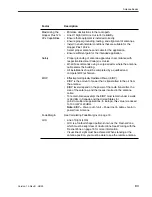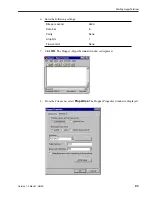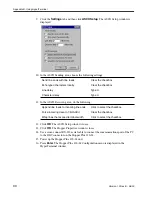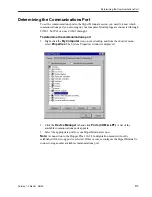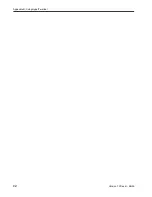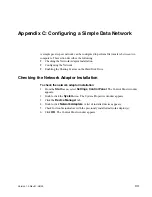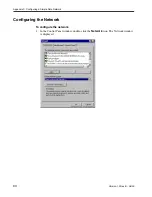
Antenna Basics
Version 1.0 Rev B - 08/00
81
Implementation Considerations
Following are some key items to consider when selecting and installing antennas for your
wireless network:
XPD
• Polarity and Cross-Polarization Discrimination (XPD).
• Antennas have an associated polarity, which is the orientation of
the radiating element with respect to earth.
• Antennas are usually described as vertical, horizontal, or
circularly polarized. The polarity of all antennas used in a
system must be the same.
• Cross-Polarization Discrimination specifies the signal isolation
achieved when the receiving element is perpendicular to the
radiating element. This can be advantageous when co-locating
radio systems.
VSWR
• Voltage standing wave ratio.
• VSWR is the voltage ratio of minimum to maximum across a
transmission line.
• A VSWR of 2.0:1 or less in an antenna is considered effective.
Most antennas have a VSWR of 1.5:1.
• For example, when using a radio with a 4 watt output with an
antenna VSWR of 1.5:1, the reflected power will be 160
milliwatts.
Item
Description
Absorption
• Antennas mounted too close to “soft” objects, such as trees,
may experience a reduction in signal strength due to absorption.
• Absorption is most often encountered in applications installed
during the fall or winter months, and the problem does not
become evident until the spring.
Diffraction
• Diffraction occurs when a radio signal reflects or bounces off of
a solid object.
• The level of diffraction could lead to connectivity problems if the
remaining signal level is too low.
• Two types of diffraction are
shadowing
and
multipath
.
Shadowing
• Shadowing is a form of diffraction that is typically caused when
antennas are mounted too close to a structure and they lose a
portion of the signal lobe due to reflection. The receive antenna
is in a
shadowed
area.
• To minimize shadowing, ensure that there is adequate height
above structures when mounting antenna equipment.
Multipath
Interference
• Multipath is a form of diffraction in which the reflected signal
arrives at the receiver at different times which confuses the
receiver.
• Multipath may be interpreted as interference by the receive
antenna, and can result in bit errors and processing delays.
Parameter
Description

